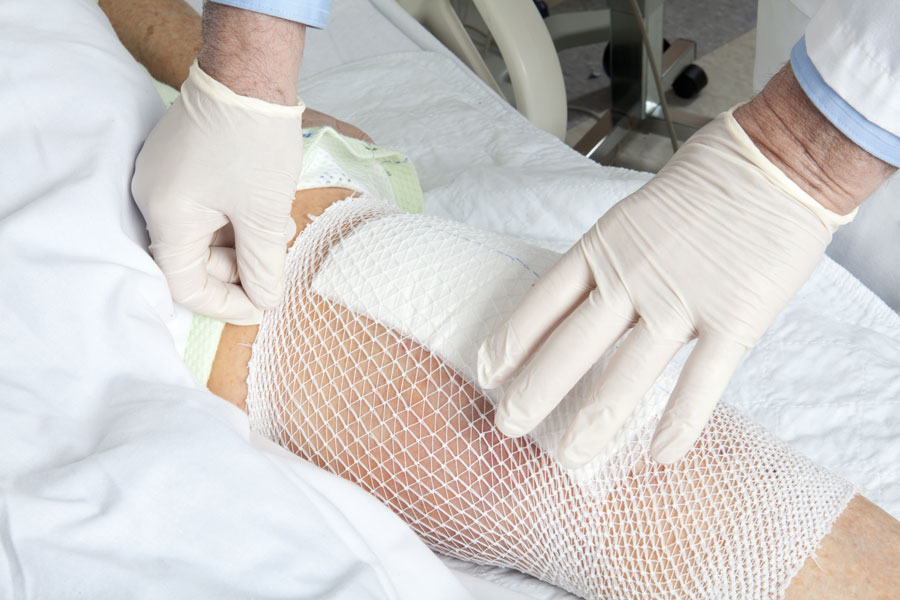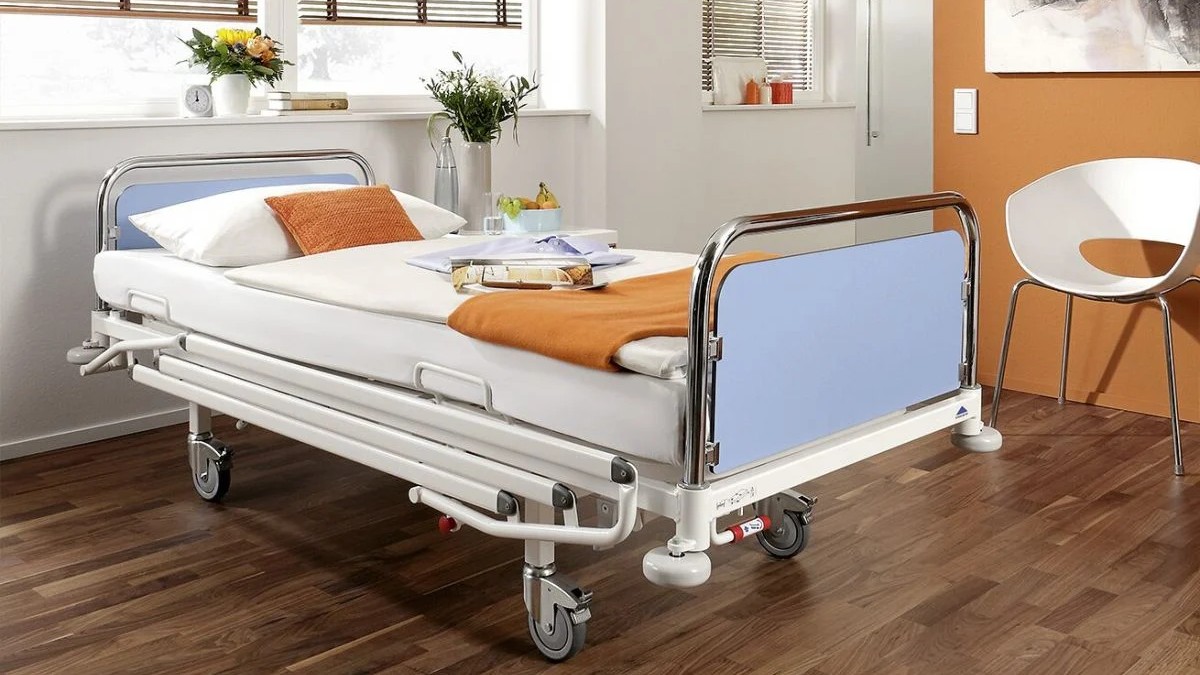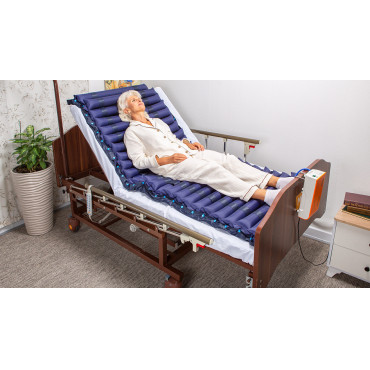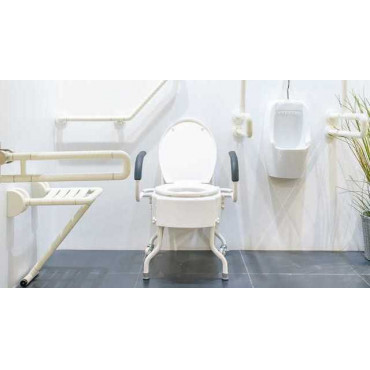Caring for bedridden patients is a complex and responsible task that requires special attention to every detail.
One of the most common complications in such patients is pressure ulcers. They not only cause physical pain, but also significantly complicate the treatment process, can lead to the addition of infections and deterioration of the general state of health.
Everyone who cares for bedridden patients, people with limited mobility or elderly people who move little should be informed about what pressure ulcers are, how to prevent them and how to treat them.
What are pressure ulcers?
Pressure ulcers are necrotic lesions of the skin and subcutaneous tissues that occur as a result of prolonged compression of the same area of the body. Most often, they form in places with a minimal fat layer: on the sacrum, shoulder blades, heels, elbows.
Conventionally, the process of pressure ulcer formation can be divided into several stages:
- Redness of the skin, which does not disappear after reducing the pressure.
- Surface damage - blisters or cracks appear.
- Injury of the deeper layers of the skin, subcutaneous tissue, ulcer formation is possible.
- Deep wound with damage to the muscles and even bone tissue.

The most difficult, of course, is to treat pressure ulcers of stage 3-4, it is better not to bring the skin to this state. Especially when there are many methods available for both treatment and prevention of pressure ulcers.
Who is at risk for developing pressure ulcers?
Pressure ulcers most often occur in patients who are forced to stay in one position for a long time due to limited mobility. The risk group includes people:
- after a stroke or heart attack;
- with spinal, pelvic or limb injuries;
- after complex operations requiring prolonged bed rest;
- with cancer;
- in a coma;
- elderly with age-related disorders of the musculoskeletal system.
So, if your family has a person who is currently bedridden, immobilized or extremely immobile, you need to know what products for bedridden patients you may need to prevent complications such as the formation of bedsores.
Why are bedsores dangerous?
Desiccant bedsores are the "gateway" for infection to enter the body. In a neglected state, they can lead to the development of purulent-inflammatory processes and even sepsis. In addition, the presence of such wounds on large areas of the skin can significantly worsen a person's general well-being, lead to the appearance of pain syndrome and loss of quality of life.

That is why the prevention of pressure sores is one of the main tasks in the care of bedridden patients.
Effective prevention of pressure sores
The main principle of prevention is regular reduction of pressure on areas of the body that are constantly exposed to friction, as well as compliance with hygiene and proper care. Here are the most effective means of prevention:
1. Anti-bedsore mattresses
Anti-bedsore mattresses are an indispensable tool in the care of bedridden patients. They are specially designed to evenly distribute pressure on the patient's body and constantly change the points of support.
The MED1 website presents various models of mattresses for bedsores:
- Cellular mattresses. Ideal for patients with the first and second degree of risk of developing bedsores. Thanks to the compressor, the air periodically changes the pressure in the chambers, reducing the load on the same areas of the body.
- Tubular mattresses. More powerful models for patients with a higher degree of risk or already existing bedsores. Some of them are equipped with a pressure adjustment function, which allows you to adjust the mattress to the patient's weight.
2. Medical functional beds
Adjustable medical beds provide the patient with a comfortable body position and simplify the care process. Thanks to the ability to change the angle of inclination of the body or legs, it is easier to avoid prolonged stress on one area of the body. And this, in turn, significantly reduces the risk of bedsores.

In addition, having a medical bed for bedridden patients at home, you will greatly simplify your work with lifting and turning a person.
3. Diapers and diapers for adults
Regularly changing underwear and maintaining dryness - another important step in prevention. Diapers and diapers for adults with high absorption capacity help keep the skin dry and prevent maceration - softening of the skin, which increases the risk of bedsores.
On the MED1 online store website, you can choose diapers of different sizes, degrees of moisture absorption and with a soft top layer that does not irritate the skin.
4. Hygiene and regular body position changes
In addition to additional means for rehabilitation and support, it is worth knowing simple rules that are also effective in preventing bedsores. These recommendations can significantly reduceand the risk of pressure sores.
- Change the patient's position at least every 2 hours.
- Perform daily wet cleansing of the skin using special products for intimate hygiene.
- Use protective creams or foams that reduce friction and preserve the natural skin barrier.
All these medical products for people with disabilities have proven effectiveness and can significantly improve the quality of life of a bedridden patient.
What to do if pressure sores appear?
At the first signs - redness or irritation of the skin in a bedridden patient - it is necessary to stop pressure on the affected area, ensure its cleanliness and dryness. Use antiseptics and special pressure sore bandages.
We also recommend consulting a doctor to assess the extent of the lesion and prescribe treatment.
Prevention of pressure sores is not only a matter of comfort, but also care for the patient's life and health. Proper care, high-quality anti-pressure sore mattresses, medical beds, hygiene products and attention to every detail will help avoid serious complications and create safe conditions for recovery.


-370x370.jpg)
-370x370.jpg)

-370x370.png)



-370x370.jpg)
